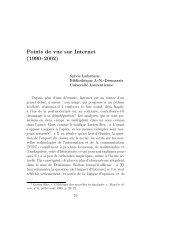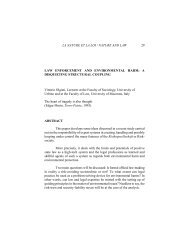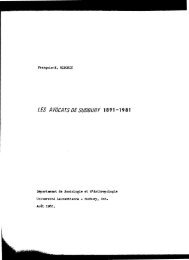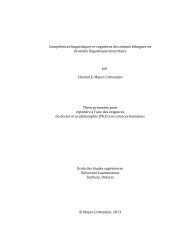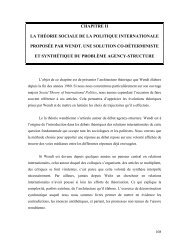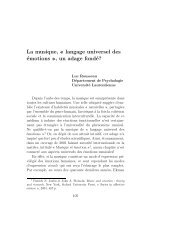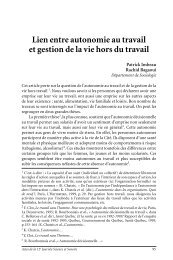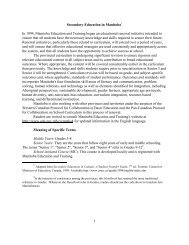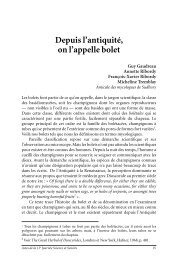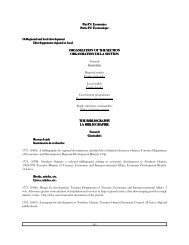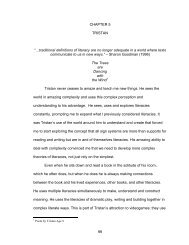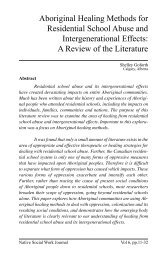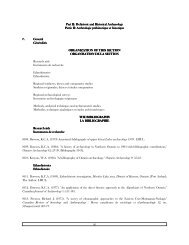NSERC grants at Laurentian University Subventions du CRSNG `a l ...
NSERC grants at Laurentian University Subventions du CRSNG `a l ...
NSERC grants at Laurentian University Subventions du CRSNG `a l ...
- No tags were found...
Create successful ePaper yourself
Turn your PDF publications into a flip-book with our unique Google optimized e-Paper software.
104Robert LeclairA system<strong>at</strong>ic approach for determining whether a low-anglex-ray sc<strong>at</strong>ter detection system could improve the detection ofbreast cancersA grant of $23,500 per year.Une subvention de 23 500 $ par année.Discovery Grant – Subvention à la découverteIn conventional mammography, breast structuresare more easily distinguished if their properties to<strong>at</strong>tenu<strong>at</strong>e x rays are significantly different. The absorptionof radi<strong>at</strong>ion is largely governed by the <strong>at</strong>omiccomposition and density of tissue. The tasksof detecting small cancers within a fibrous breastare difficult because the properties to absorb x rays for these tissue typesare similar. These particular imaging tasks are challenges even for the newerst<strong>at</strong>e-of-the-art digital mammography systems. Though the propertiesof carcinoma and fibrous tissue to absorb x rays are similar, there is reasonto believe th<strong>at</strong> the x-ray diffraction (i.e. low-angle x-ray sc<strong>at</strong>ter) signals ofthese tissue types could offer a new source of contrast th<strong>at</strong> could improve thediagnosis of breast cancer. The x-ray diffraction signals are characteristic ofthe molecular structures of the tissue.The first objective of the project consists of measuring the low-angle x-ray sc<strong>at</strong>ter sign<strong>at</strong>ures of human breast tissues. I have established links withMedical Personnel from the Hôpital Régional de Sudbury Regional Hospital(HRSRH), the Sudbury Regional Breast Health Program, and from the SudburyRegional P<strong>at</strong>hology Associ<strong>at</strong>es. Our research program has been ethicallyapproved by the Research Ethics Board <strong>at</strong> <strong>Laurentian</strong> <strong>University</strong> and by theResearch Ethics Committee <strong>at</strong> the HRSRH. We have so far recruited 50 specimens.They are stored in our lab in liquid nitrogen. With an equipmentgrant from <strong>NSERC</strong>, we have built a custom made energy dispersive x-raydiffractometer. Briefly, it consists of a Faxitron X-Ray Model 43855C x-raycabinet system configured to house an ioniz<strong>at</strong>ion chamber, a system of collim<strong>at</strong>ors,a tissue sample holder, a cadmium zinc telluride detector (CZTD,3×3×2 mm 3 ), and several positioning devices. Although our CZTD has the




